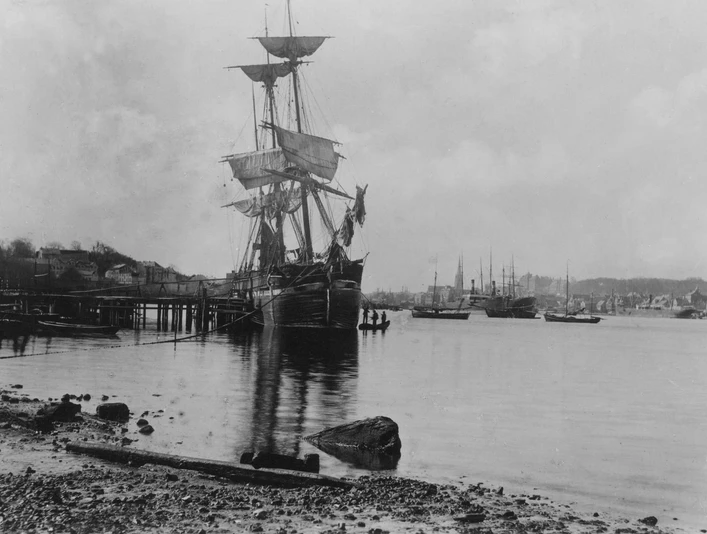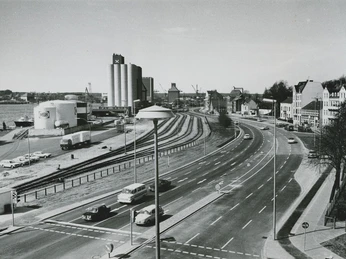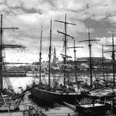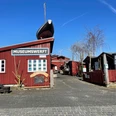Ballast Bridge
Sailing ships that had been emptied of their cargo, had to be loaded with "ballast" to ensure their stability, i.e. a weight was placed in the ship's hold as a substitute. In Flensburg, sand was used for this purpose, as this material was found in abundance on the eastern shore of the fjord, at the so-called Ballastberg, today named Blasberg, north of the Lautrupsbach. Since 1581, the ships loaded the sand here at a special ballast bridge, which is still commemorated by the street name of the same name.
Taking on the ballast was a laborious and tedious task performed by men as well as women. In 1808, 17 women were co-workers in this trade. The sand was first shovelled into wheelbarrows, then shoved on board the ship on a ramp, covered with wood, and then tipped into the hold. In the process, the heavy cart travelled from hand to hand in a chain of sections. Over the centuries, thousands of ships have been loaded with ballast in this way.
The carts belonged to the Schiffergelag (Station 3), which made a good income from the sale of sand. The guild‘s statutes stipulated, that "no skipper, whether foreign or domestic, shall be permitted to ballast his ship at any place other than the ballast bridge“. It was also forbidden for incoming ships to sink ballast in the fairway of the Flensburg Fjord. Instead, it had to be brought to the ballast bridge, so that the contents would be re-available, and the Flensburg Fjord would not be silted up. Violations were punished with fines.
Good to know
Openings
Nearby







